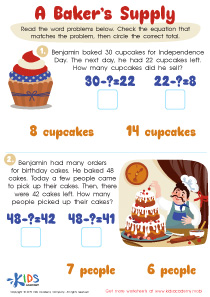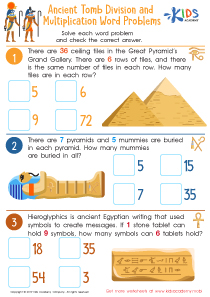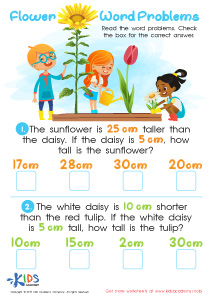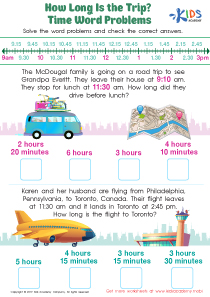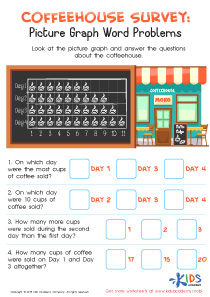Easy Two-step Word Problems Worksheets for 5-Year-Olds
5 filtered results
-
From - To
Introducing our Easy Two-step Word Problems worksheets, specifically crafted for five-year-old learners! These school interactive worksheets are designed to build foundational math skills in an engaging and accessible manner. Each worksheet features age-appropriate problems that encourage young learners to apply basic addition and subtraction in two-step scenarios. Ideal for both classroom and home use, these worksheets support children as they begin their journey into problem-solving and critical thinking. Watch your child’s confidence grow as they navigate through each fun and educational challenge, setting a strong base for future academic success. Perfect for young minds eager to learn and explore!
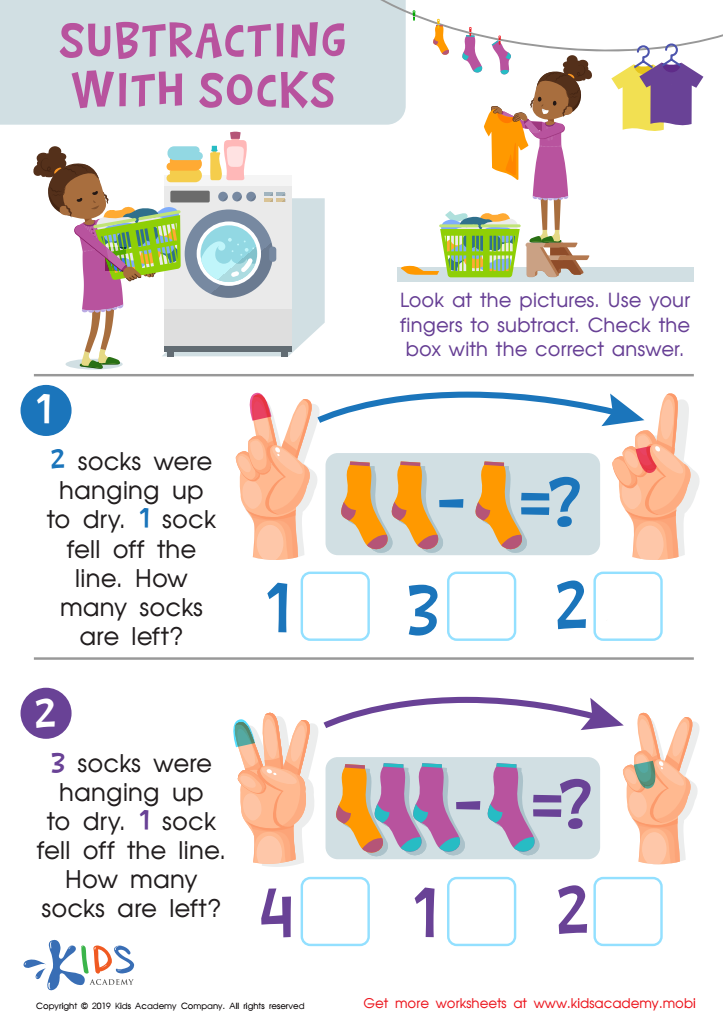

Subtracting Socks Worksheet
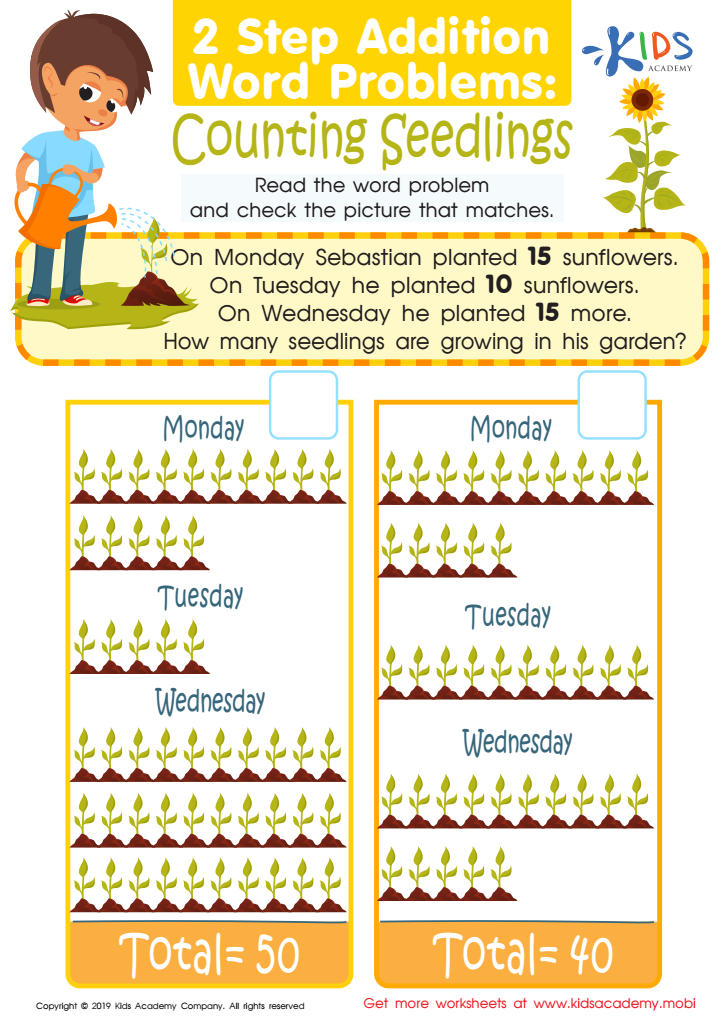

Counting Seedlings Worksheet


Using Number Sentences to Solve Problems Worksheet
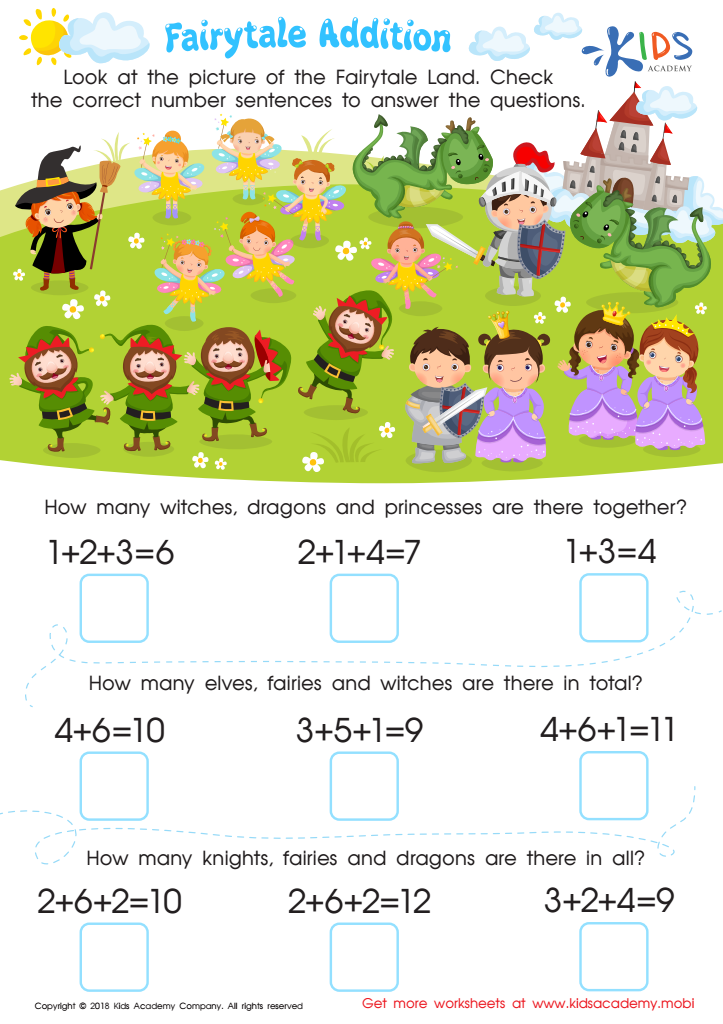

Fairytale Addition Worksheet
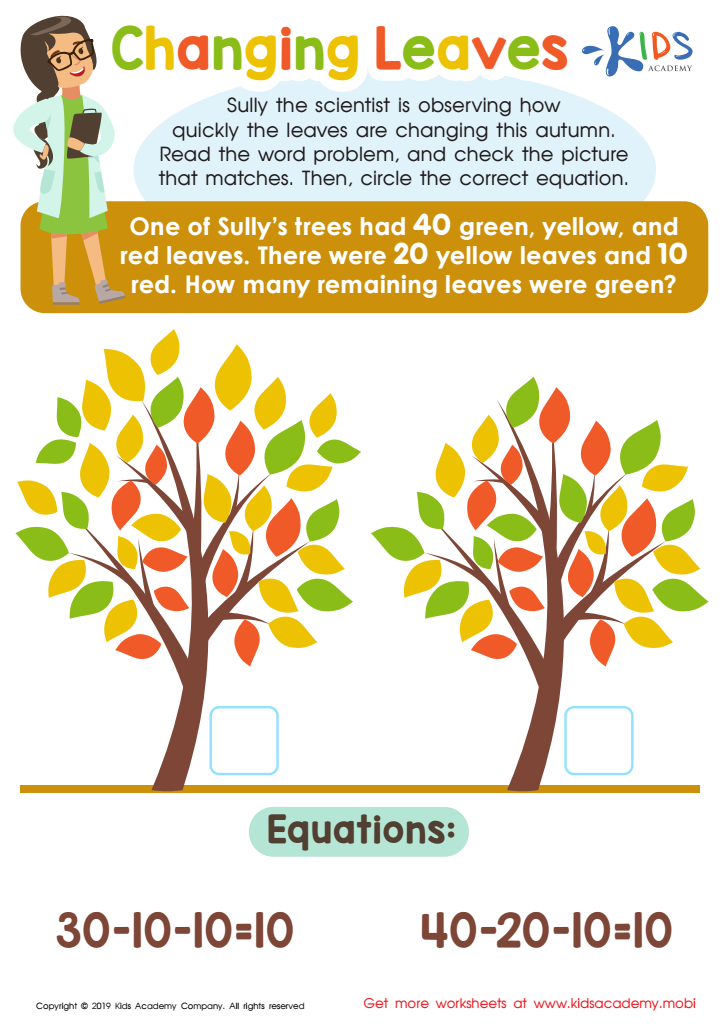

Changing Leaves Worksheet
The Benefits of Easy Worksheets on Two-Step Word Problems for Five-Year-Olds Featuring School Interactive Printables
In the early stages of learning, particularly around the age of five, children are just beginning to make sense of the numbers and basic arithmetic that form the foundation of their mathematical journey. At this tender age, engaging them with materials that blend learning with fun is crucial to developing their interest and understanding. This is where easy worksheets on two-step word problems come into play, especially when integrated with school interactive printables.
Why Focus on Two-Step Word Problems?
Two-step word problems are an excellent tool for young learners as they begin to apply their numerical knowledge to real-world scenarios. These problems require a child to make use of more than one mathematical operation (such as addition and then subtraction). By solving these, children enhance their critical thinking and problem-solving skills. For five-year-olds, these problems are simplified into very basic steps that align with their cognitive abilities yet challenge them just enough to keep them engaged.
Integration with School Interactive Printables
The use of school interactive printables makes these worksheets even more appealing and beneficial. These printables often include colorful graphics, engaging storylines, and interactive elements that can be manipulated physically or digitally, making the learning process much more enjoyable and relatable. Here are a few reasons why easy worksheets on two-step word problems, combined with interactive printables, are incredibly useful for five-year-olds:
-
Enhanced Engagement: Children are naturally curious and playful. Interactive printables that accompany the worksheets turn learning into a form of play. This not only captures the child’s attention but also sustains their interest in solving the problems.
-
Visual Learning: At the age of five, many children are visual learners. They understand and remember information better when it is presented visually. Interactive printables often use vibrant colors and characters that help in visualizing the problems, making it easier for children to comprehend and solve them.
-
Incremental Learning: Two-step word problems can be designed to incrementally increase in complexity. This gradual increase helps in building confidence as the child feels more accomplished after solving each problem, encouraging them to tackle more challenging ones.
-
Development of Multiple Skills: These worksheets are not just about math. They also help in improving reading and comprehension skills as the child needs to read and understand the problem before attempting to solve it. Moreover, interacting with physical elements (like cut-outs or movable pieces) enhances fine motor skills and hand-eye coordination, which are critical developmental milestones for five-year-olds.
-
Immediate Feedback and Adaptability: Many interactive printables are designed to offer instant feedback, which is pivotal in reinforcing learning and correcting mistakes in real time. This feedback can be through visual cues or interactive elements that change when a problem is solved correctly, providing a sense of achievement. Additionally, these materials can be easily adapted to suit individual learning paces and preferences, making them suitable for a diverse range of learners.
-
Parental and Teacher Interaction: Easy worksheets with school interactive printables encourage more than just individual learning; they also open opportunities for collaboration. Parents and teachers can participate in guided activities, providing support and encouragement that further boosts the child’s motivation and learning outcomes. This interaction not only helps in solving the problems but also in discussing the concepts, thereby deepening the child's understanding.
-
Encouragement of Logical Thinking: While dealing with two-step problems, children learn to follow sequences and develop logical thinking patterns. They begin to understand that some tasks need to be completed in a specific order to reach a solution, a skill that is applicable in many real-life situations.
-
Preparation for Future Educational Challenges: Early exposure to structured problem-solving prepares children for similar academic tasks they will encounter in future grades. As they advance in school, problems will naturally become more complex. Having a strong foundation built through engaging and interactive learning experiences will give them a notable advantage.
-
Inclusivity: The design of school interactive printables often considers various learning styles and abilities, making these tools inclusive. Children with different needs and preferences can find a method of interaction that works best for them, ensuring that learning is accessible to everyone.
Conclusion
Incorporating easy worksheets on two-step word problems with school interactive printables into the educational routine of a five-year-old is more than just a learning activity; it’s an engaging, multifaceted educational experience that builds a robust foundation for future academic success. These tools not only teach math but also foster critical thinking, problem-solving skills, and a positive attitude towards learning through interactive and enjoyable methods. As we aim to nurture well-rounded, capable young minds, these interactive educational materials play a vital role in achieving that goal, making them an invaluable resource in the early educational landscape.
 Assign to the classroom
Assign to the classroom
